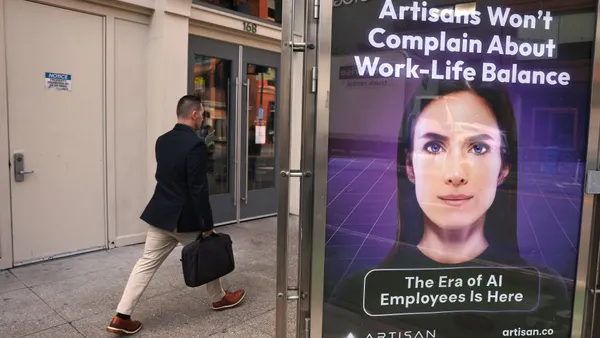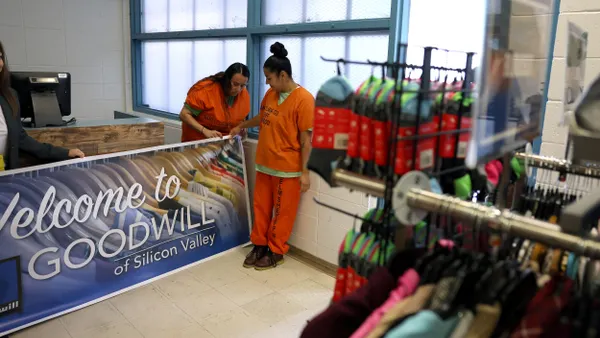Dive Brief:
- October job numbers ticked up to 261,000 as joblessness dipped to 4.1%, according to the U.S. Bureau of Labor Statistics. Employment rose in food service and drinking establishments by 89,000, offsetting a 98,000 loss in jobs from September hurricanes Harvey and Irma. Professional and business services gained 50,000 jobs in October, manufacturing gained 24,000 (156,000 in the last 12 months), and healthcare gained 24,000.
- Among the major worker groups, "the unemployment rates for adult women (3.6 percent) and Whites (3.5 percent) declined in October," BLS reported. "The jobless rates for adult men (3.8 percent), teenagers (13.7 percent), Blacks (7.5 percent), Asians (3.1 percent), and Hispanics (4.8 percent) showed little change." Joblessness for the 1.6 million long-term unemployed (those out of work for 27 months or more) remained unchanged at 24.8% of all unemployed Americans.
- In a statement, Rebecca Henderson, CEO of Randstad Sourceright, said that HR technology may be partly to thank for the one-month recovery in job loss from September's storms. She said employers were able to move quickly to fill jobs, even as talent scarcity remains a big concern.
Dive Insight:
Steady job growth is a sign of a healthy economy, but filling positions remains difficult. HR technology tools like predictive analytics allow employers to select the best talent out of groups of candidates to fill openings. Greg Moran, president and CEO of Outmatch, told HR Dive that predictive analytics will be the biggest recruiting trend to drive productivity and profitability next year.
The 4.1% unemployment rate is considered almost "full employment," creating recruiting challenges for employers in all industries. Employers of all backgrounds are getting creative to find the talent they need, turning to flexible work arrangements and other benefits.
However, job growth for most working groups remains largely unchanged, particularly for people of color. HR technology can help boost diversity numbers, too, with tools like software that helps employers create competitive job descriptions that flag gender-biased language.










